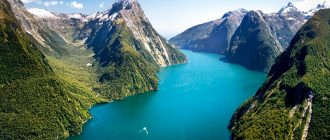Szeged (Hungary) – the most important sights with photos and description. Detailed information about the city and interesting routes Szegedu on the map.
Contents
Szeged City (Szeged)
Szeged is a city in southern Hungary, located on the banks of the river Tisza. It is the country’s third largest city, very interesting from a tourist point of view: interesting sights and monuments of architecture, history and culture, as well as a special cozy atmosphere.
 Panorama Szeged
Panorama Szeged
Location
Szeged is located 170 km south of the capital of Hungary – Budapest.
Climate and weather
Szeged is located in the continental climate zone with a rather hot summers and mild winters. The coldest month is January, the most hot – July and August. In winter, negative temperatures are possible. snowfalls A distinctive feature of the climate is a large the number of sunny days. In Hungary, Szeged is called a “city of the sunlight. ”
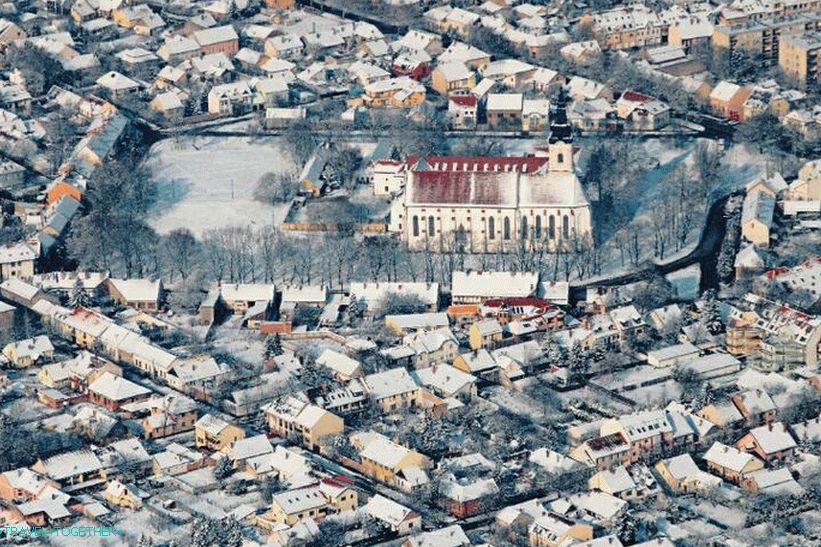 Szeged in the winter
Szeged in the winter
Story
Already in the time of the Roman Empire at the site of Szeged, at the intersection roads connecting the two Roman provinces, there was a small settlement. There is also a version that a camp was located nearby. Attila – the leader of the Huns.
The first mention of the city of Szeged dates back to 1183. In the 13th century the city was almost completely devastated during the Mongol-Tatar invasions. Residents of the city hid from the conquerors in the nearby swamps. After that, the city was rebuilt.
In the second half of the 13th century, the city received royal privileges fortress. 14-15 centuries are turning points for the city. Szeged becomes the largest city of southern Hungary, and the Turkish threat increases its strategic importance. In 1498 he becomes free royal city.
The first half of the 16th century was unsuccessful for the city. Szeged first was looted by the Turks, and after 20 years became part of the Ottoman the empire, in which part remained for 150 years.
In the second half of the 17th century, the city was part of Austria-Hungary. In the 18th century, Szeged quickly grew and developed. In the 19th century the city turns into a major industrial center. It should be noted that in 1879 catastrophic flood occurs here, the result of which he was almost completely washed away. Restoration of Szeged lasted several dozen years old.
 Fair
Fair
In the 20th century, the city does not lose its position in the region. After the first World War I Szeged becomes a border town. During the period civil war the city becomes one of the political centers. During the Second World War exposed significant destructions.
Kitchen and restaurants
Szeged offers both traditional and Hungarian cuisine. and restaurants with European cuisine and fast foods. On the banks of the Tisza you You can find many fish restaurants with a cozy atmosphere in which is definitely worth trying the local fish soup. In the city itself You can also find a large selection of places to eat – from restaurants with fine dining to small cafes with terraces. For lovers of fresh vegetables and fruits in the Szeged work markets. One of They are located on Mars Square (Mars téri piac).
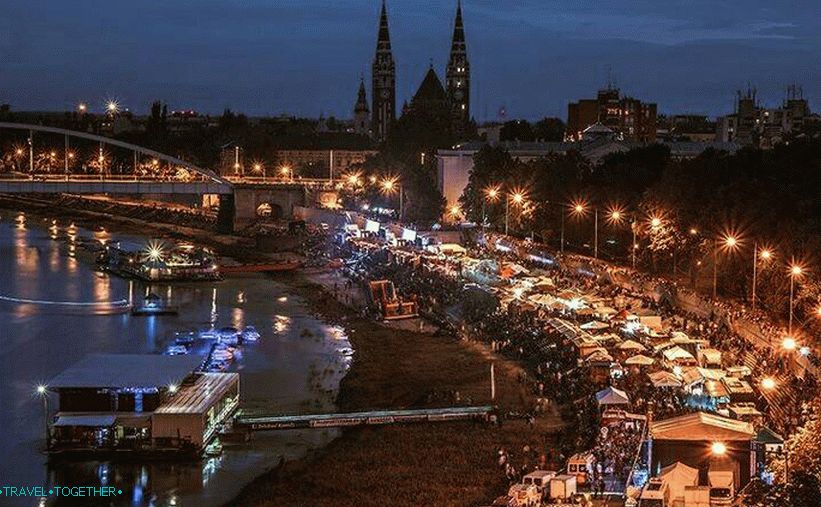 Embankment Yew
Embankment Yew
Where to buy souvenirs?
To buy souvenirs you can go to the market, located Cserepes sori Piac. The market occupies 4.5 hectares and open from 7.00 to 15.00
Transportation and movement around the city
Szeged has a good transport infrastructure. For 5 trolley buses, 5 trolley buses and 33 bus routes. For lovers of biking automatic rental points are provided.
Sights of Szeged
Among the attractions of Szeged attract attention following:
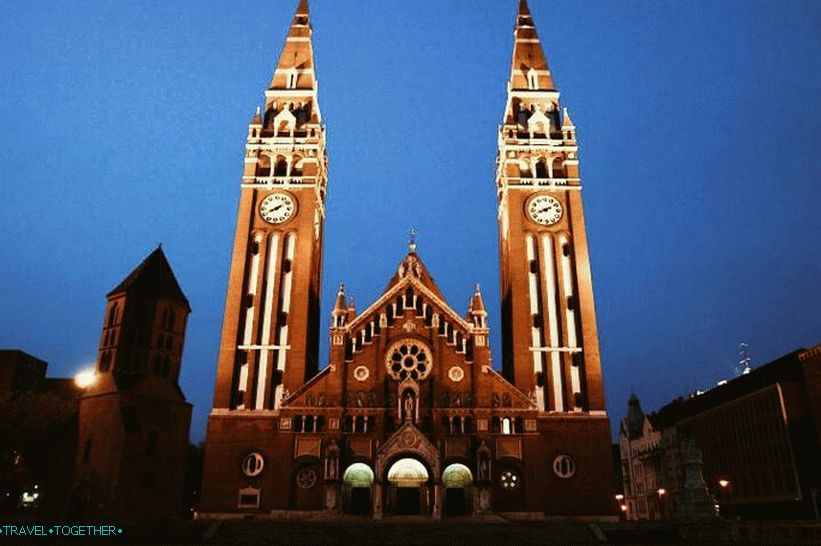 Cathedral
Cathedral
The Cathedral is one of the business cards of Szeged. it a beautiful cathedral of the 30s of the 20th century, built of red brick eclectic style. The architecture of the cathedral mixed romance, Gothic and Byzantine motifs. This is the fourth largest church. Of Hungary. Also here is one of the largest bodies. Often it is also called the Votive Church. Nearby is the tower of St. Demeter. Previously, it was the bell tower of an ancient cathedral of the 13th century, which was restored in the form of a tower after a flood in the 19th century.
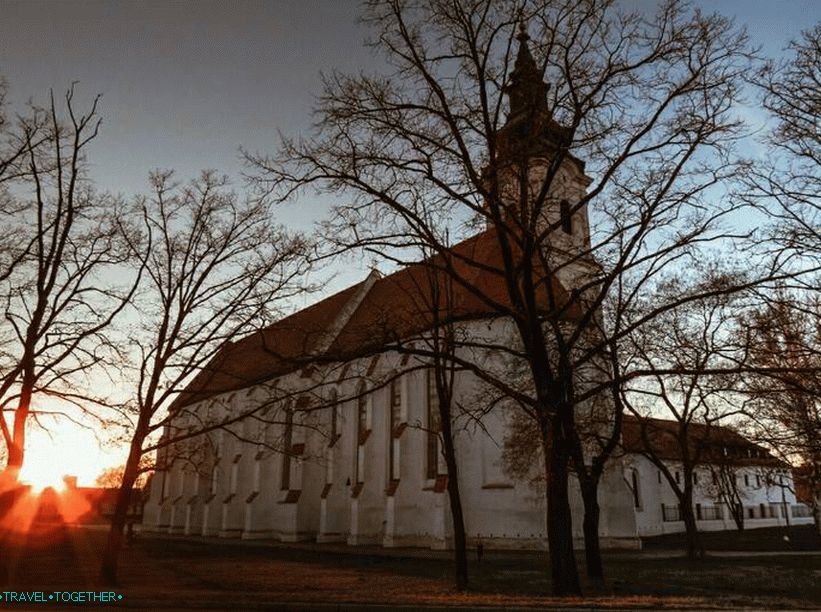 Franciscan Church and Monastery
Franciscan Church and Monastery
Franciscan Church and Monastery – one of the oldest buildings Szeged, built in the 15th century in the Gothic style and miraculously survived flood. The roots of the church and monastery go back to the 12th century. Internal the decoration is made in baroque style.
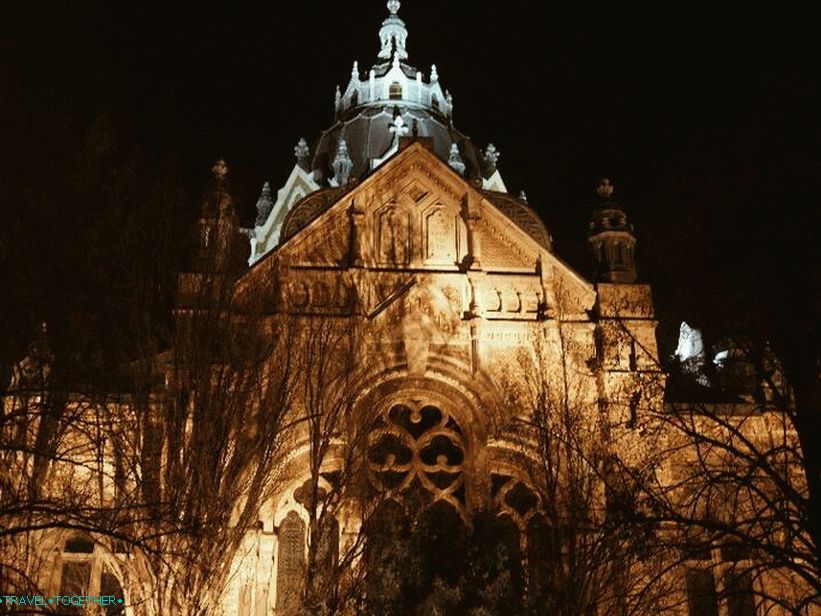 New synagogue
New synagogue
The synagogue was built in Szeged at the beginning of the 20th century. Presents a beautiful building in eclectic style.
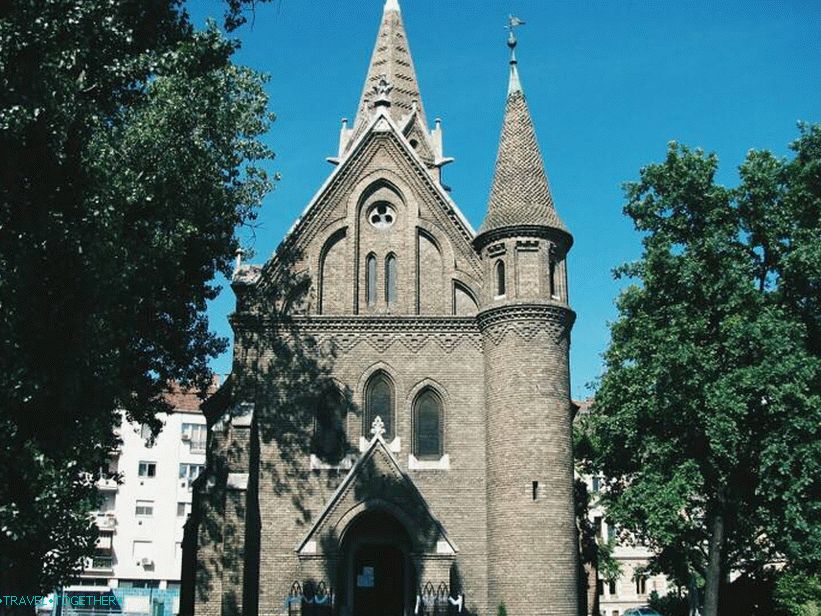 Reformed Church
Reformed Church
Reformed Church – built at the end of the 19th century after floods. Beautiful neogothic building.
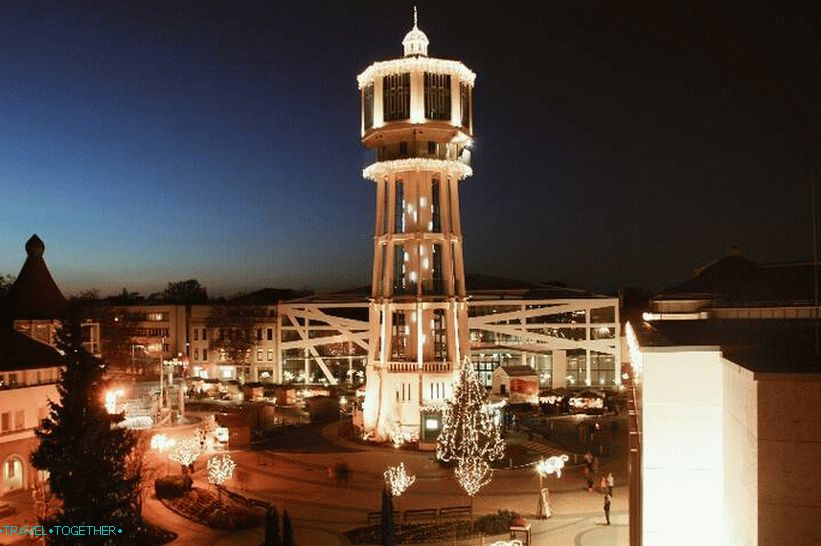 Water tower
Water tower
The water tower is an interesting engineering structure, located on the square of sv. Ishtvana Built at the beginning of the 20th century from reinforced concrete. Still performs its functions.
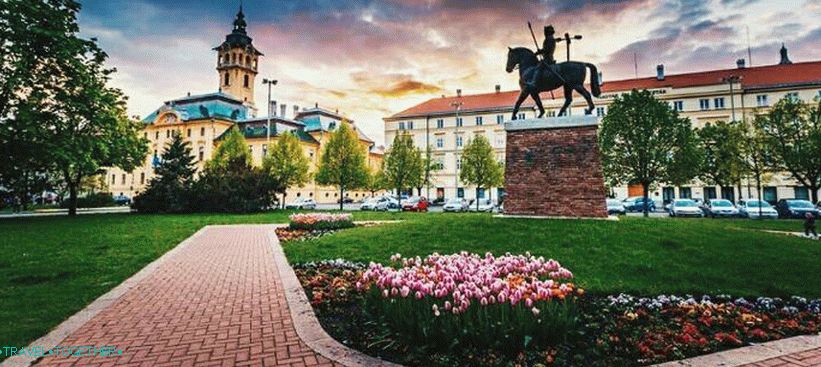 Town hall
Town hall
The Town Hall is a neo-baroque building built at the end of the 19th century. Here sits the city government.
 Graph palace
Graph palace
The Count’s Palace is an interesting building of the early 20th century. Art Nouveau with a beautiful facade.
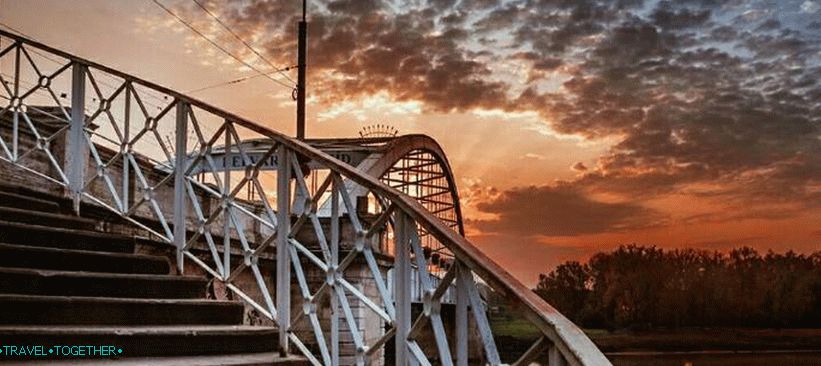 Central bridge
Central bridge
The central bridge, built in the late 19th century, connects both the banks of the river Tisza.
Video of Szeged





